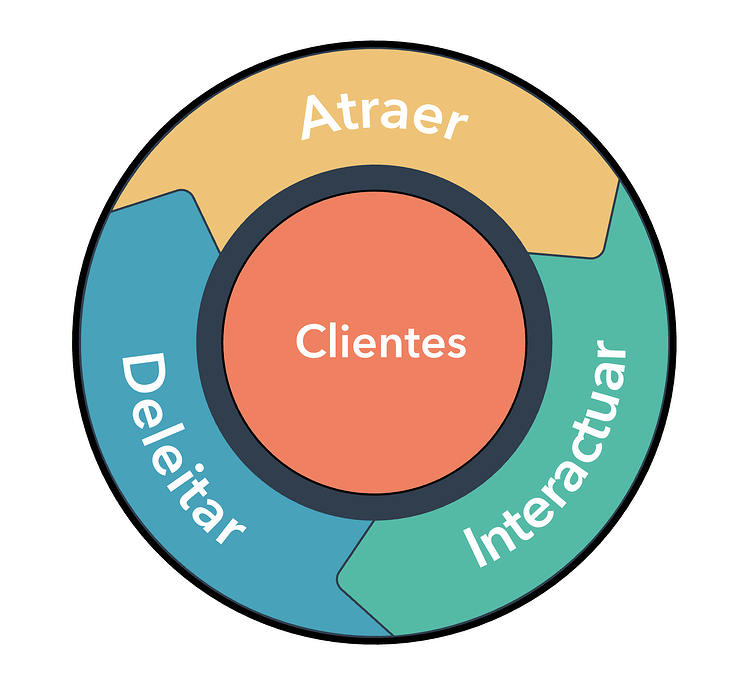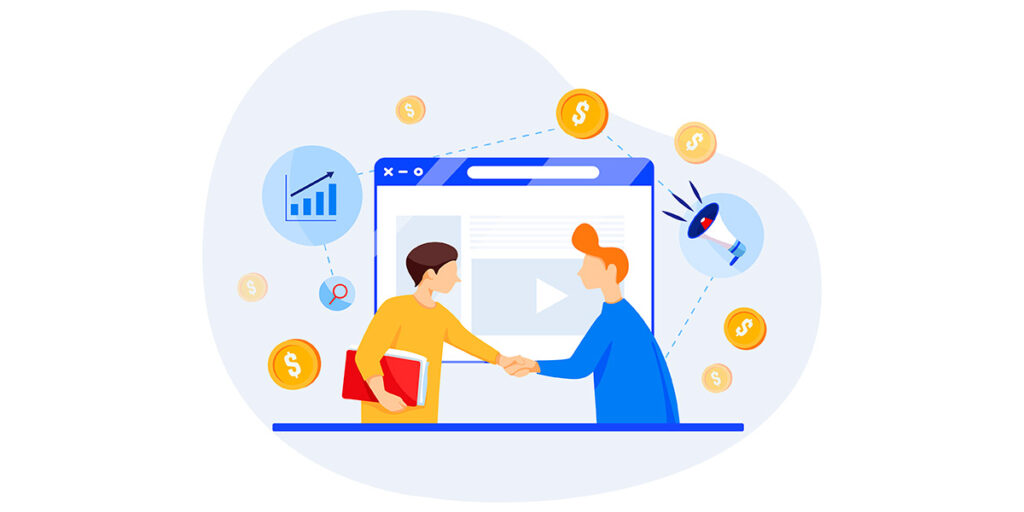Inbound marketing is the process of helping potential customers find your company. This usually occurs before the customer is ready to buy. However, establishing early contact can turn into brand preference and ultimately into leads and revenue.
This technique of inbound marketing uses many forms of attraction marketing to build brand awareness and attract new business.
Unlike outbound marketing, inbound marketing focuses on visibility, so that potential buyers come to you. Instead of “renting attention,” companies focus on new methods aimed at:
– Creating awareness
– Develop relationships
– Generate leads
How is inbound marketing done?
There are different inbound marketing techniques. One of the first things to consider is understanding your audience and what they want from you as a brand.
Once you have established this through data and research, you can work on how to engage and build relationships with them through inbound marketing. This could be launching a blog, creating an email strategy, hosting an event, search engine optimization (SEO) or communicating with your customers through social media.

Benefits of an inbound marketing strategy
The content provided by inbound marketing is educational, entertaining and can be more welcomed by consumers or customers, even appealing to customers because it doesn’t make people feel like they are being sold to.
When done correctly, inbound marketing can yield much better results than traditional marketing. This is because these classic methods interrupt prospects, rather than inbound methods, which give people an open invitation to engage if they want to.
When consumers encounter your company in this way, it has a greater influence on their future marketing decisions and their feelings about your business in general. And the best part? Inbound marketing consists of completely organic leads, so it’s brain-based, not budget-based.
Advantages of inbound marketing

Inbound marketing has many key advantages. Among them is its ability to:
– Puts the customer as the protagonist or in the driver’s seat, allowing you to connect with people who are genuinely interested in what you have to say.
– It does wonders for social media shares, brand awareness and search engine optimization efforts.
– It brings in leads. Inbound marketing generates three times more leads per dollar than traditional methods
– Increases web traffic. Companies with content marketing strategies say that web traffic is their primary measure of campaign success (HubSpot).
– Has a proven ROI. Small businesses report getting the best ROI with email marketing or email marketing, a type of inbound marketing (Campaign Monitor).
– It allows customers to engage with your brand at any time, so you can generate qualified leads for much less money than traditional marketing.
As data creation continues to increase – the information abundance and attention shortage will only increase.
The empowered buyer has all the information they need to make a purchase decision at their fingertips anytime, anywhere. Product and service specifications, pricing and reviews are in their pocket, not to mention the impact of social media on information sharing. To succeed in this evolving landscape, visibility through inbound marketing is critical.
“Inbound marketing is so powerful because you have the power to give the searcher/consumer exactly the answers they are looking for at the precise moment they need them. That builds trust, reputation and authority in whatever niche you’re practicing this form of marketing in.”
Joshua Gill, Inbound Marketing and SEO Consultant, InboundAuthority
Learn the methodology of inbound marketing

Like any good marketing concept or discipline, inbound marketing is underpinned by theory. Instead of starting inbound marketing in a haphazard, ad hoc manner, you should use this theory to understand why you are doing it and what you hope to achieve.
Inbound methodology offers three approaches to consider:
1. Engage: Create and publish content regularly to attract prospects and address their needs, problems and desires.
2. Engage: Establish a good relationship with prospects by talking to them about their challenges and offering solutions.
3. Delight: Prioritize the retention/advocacy stages of the customer journey with a focus on content and post-sale communications.
Inbound marketing typically has a lower upfront cost than other marketing efforts, and can have a really impressive ROI when used correctly.
How do you plan, implement and optimize your inbound marketing program?

Creating great content is more about intelligence and commitment than budget. You can’t just throw money at content and make it effective. You have to put your head and heart into it. Get started in 5 simple steps.
Step 1: Define your company’s goals and buyers.
Identify your target audience and learn everything you can about them. You can’t write content to inform your customers until you know your audience.
Step 2: You must offer content at every stage.
Preemptively answer the questions your customers are likely to have at each stage of their buying journey. Determine your unique and compelling story.
Transformational inbound leverages valuable content to engage and retain customers throughout their lifecycle, not just before they are customers, but after as well.
Step 3: Choose your distribution platforms.
The more valuable the content you create for your audience, the more likely you are to win them as customers. Determine the best way to reach them, whether it’s through Twitter, Pinterest, Facebook, your blog or any other medium.
Step 4: Create and execute your content calendar.
Create a calendar that consistently produces fresh, relevant content to keep engaging your audience. By maintaining a steady stream of content that addresses your customers’ questions, problems and pain points, you’ll stay relevant and build your brand as a trusted thought leader.
Step 5: Analyze results and optimize your inbound marketing program.
Whether you choose to analyze SEO rankings, inbound links or the number of articles published, these resources will provide you with valuable insight into the performance of your campaigns. Spend some time analyzing on a weekly basis to measure the effectiveness of your inbound marketing efforts and areas for improvement.
How to create an inbound marketing strategy?

When it comes to your inbound marketing strategy, there are different options to consider. In general, these options are related to the Inbound methodology we talked about earlier:
Inbound: it’s all about content
In digital marketing, content is everything. This strategy is all about using content intelligently to develop relationships with customers and prospects. Most importantly, content must be user-centric, addressing people’s needs, problems and desires.
– Create a content plan based on SEO keyword research and make sure the content is optimized for search, with correct metadata, H-tags and “People also ask” questions.
– Mix different formats, such as informative articles that answer questions relevant to your brand, like how-to guides and explainers, with product pages and benefit-oriented categories.
– Collect content published on your blog and use it on social channels, in email marketing or email marketing and beyond. Follow a publishing schedule to upload new content.
Engage: sell the solutions
Conversations are at the heart of customer engagement strategies. Here, you foster relationships with prospects by building relationships through giving them your attention. Calls coming into your business are a big focus.
– Inbound sales executives and customer service agents have more freedom to build relationships with prospects and manage these contacts by getting to know them and understanding their issues.
– Most importantly, these executives avoid any kind of hard sell. Instead, they focus on empathizing with potential customers’ problems and looking for opportunities to suggest possible solutions rather than imposing products on them.
Delighting: post-purchase satisfaction
Customer satisfaction, long after they have completed their purchase, is the goal of delighting strategies. It’s about continuing to build a relationship with the customer after the purchase and ensuring that they can find the help they need.
The goal, naturally, is to turn them into brand advocates.
– Develop a post-purchase customer journey that offers relevant content at key stages. For example, a tablet. In the days after, an unboxing video; two weeks later, apps to download; three weeks after that, seasonal-focused content to get more out of it.
– Get feedback from post-purchase surveys, offer answers to social media queries and ask for opinions on the types of content people would like to receive. Inspire future purchases with discount codes and other exclusive content.
Learn more about how to make inbound marketing work for you in our inbound marketing success kit.
What are examples of inbound marketing?
There are many examples of inbound marketing. You may prefer a content-centric approach, publishing timely and relevant editorials and videos aligned with key customer interests.
You could also opt for a lead-centric approach, which focuses on building relationships through conversations.
Finally, you could prioritize building relationships with customers after they have purchased.
You might want to read: Do you know what remarketing is? Here we tell you EVERYTHING








